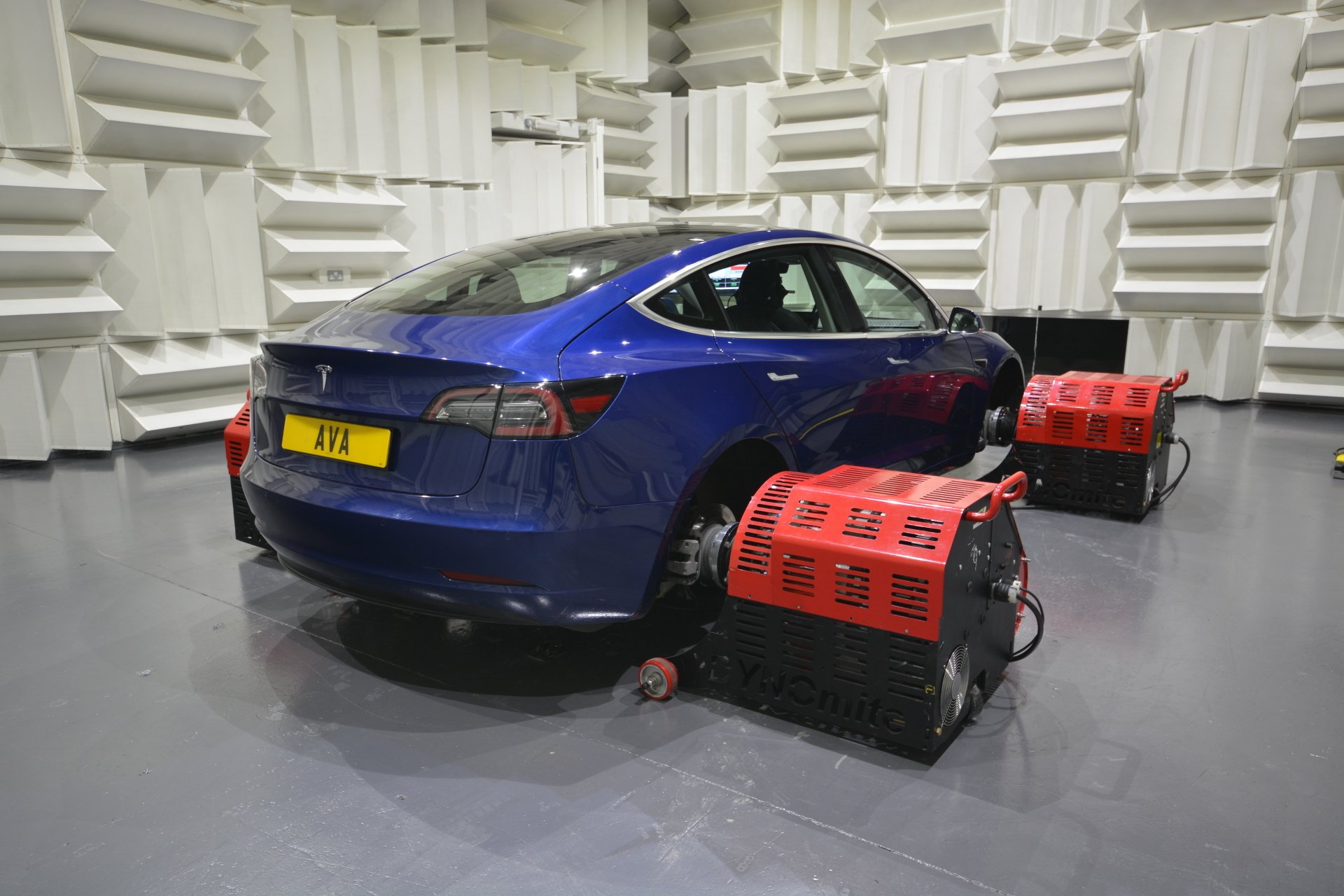Electric Drive Unit NVH
In many electric vehicles, the electric drive motor is packaged alongside a reduction gearbox and inverter as a single assembly. This unit is commonly called an Electric Drive Unit (EDU), and is analogous to the engine and gearbox assembly in an internal combustion (IC) engined vehicle.
EDU’s have less rotating components than the equivalent IC powertrain, and this, along with an absence of any combustion noise makes them inherently quieter in terms of overall noise levels. However, they can emit noises which are high frequency and highly tonal in nature, which can be annoying to the vehicle’s occupants.
Automotive electric motor EDU NVH testing can be challenging, requiring high voltage DC power supply, high torque capacity dynamometers, EDU control, NVH measurement, and test cell safety systems, all of which require significant financial investment.
AVA Consulting have developed a dedicated EDU NVH test facility, and a range of test solutions, to help our clients meet their electric powertrain NVH requirements.
EDU in Vehicle
Some EDU NVH measurements can be made using a vehicle fitted to a hub dynamometer system.
- Simple and fast test setup
- No road or wind noise, just electrical powertrain noise
- Airborne and structure-borne EDU noise contributions
- Limited access to EDU for direct noise measurement
- Useful for:-
- Vehicle NVH issue replication
- Competitor benchmarking
- Vehicle Transfer Path Analysis
EDU In Vehicle - Mounts Disconnected
To understand the balance between the air-borne & structure-borne EDU noise contributions to interior noise, AVA have devised a way to structurally decouple the EDU from the vehicle, whilst keeping it in position.
- Structure-borne noise eliminated from vehicle interior
- Only air-borne noise contributions to interior noise remain
- A partial disconnect study can also be performed, to better understand structure-borne noise contributions from the vehicle suspension for example
EDU In Frame - Vehicle Umbilical
Using extended umbilical connections between the EDU and vehicle, the EDU can be frame mounted remote from the vehicle, but can still be controlled and powered by it.
- Improved access for instrumentation and build changes
- Retains vehicle calibration
- No external control / software or HV power requirements
- Useful for EDU level benchmarking
EDU In Frame - Battery Emulator
EDU NVH can also be measured with the EDU fitted into a bespoke frame, suspended on its vehicle mounts, but powered and controlled by the EDU test cell. This solution gives not only the highest level of control, but testing is not limited by the vehicle battery's capacity.
Useful for :-
- EDU air-borne radiated noise and structure-borne noise characterisation & optimisation
- Identifying error states & root cause analysis
- NVH acoustic cover development
- Mount stiffness optimisation
- Operational Modal Analysis (OMA)
- Sound power & sound intensity
Motor Only Test Rig
Finally, the electric motor itself can be measured in isolation from a gearbox or inverter. This allows for the isolation of motor electromagnetic and mechanical noise sources.
- Electric motor noise only
- Useful for :-
- Inverter calibration comparisons
- Electric motor torque ripple without transmission disturbance
- Improved access to electric motor bearings
- Comparison of different motor types





